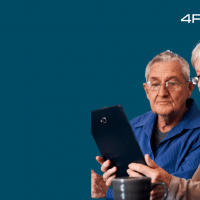World Telecommunication Day - Technologies for older people
The International Telecommunication Union (ITU) will celebrate World Telecommunication Day on 17 May, with a focus on “Digital technologies for older persons and healthy aging”.
This year’s theme is especially relevant considering the changing demographics of the 21st century. The number of people aged 60 or older is expected to increase according to the United Nations. The number would increase from 962 million in 2015 to 2 billion by 2050.
As such, there is an urgent need to develop more digital solutions that enable older persons to participate in society.
Positive health behaviours
It is well recognized that digital technologies have the potential to improve the health of older people. With digital technologies, such as smartphones, positive health behaviors can be promoted.
Positive health behaviors can be:
- physical activity
- healthy eating
- good sleep routine
- taking medications as prescribed, etc.
As a conclusion, digital technologies can support the older population with healthy aging.
Physical activity
Secondly, technology can help older persons to engage in physical activity. A big advantage is to help people stay active. These type of technologies help both elderly people and younger generations. It is possible to activate people through games, apps, and wearable devices.
Wearable devices
Wearable devices like smartwatches, can help track a person’s activity level, which can then be used to spark motivation to stay active. In addition, it can also be used to remind people when they need to take medication or do other actions that help them live independently.
Secondly, wearables can also monitor physical activity and encourage users to reach their daily goals.
Mental health
Digital technologies can reduce loneliness and improve social interactions. Therefore digital technology has been shown to have a positive impact on mental health.
As an illustration, with a mobile device, for example, you can easily contact family or friends and stay up to date on each other’s lives.
Cognitive stimulation
Cognitive stimulation can be created through technology. In other words, technology can stimulate our brain to think, concentrate and memorize things. All of the above, can be trained by playing games or using apps that provide mental challenges.
Communication
As explained before, digital technology provides opportunities for social interaction with family members, friends, and other loved ones. Email, text messages, and videoconferencing are only one click away.
The impact of social media
Social media has been used successfully to promote social connections between older people who may otherwise be isolated from each other. In addition, it can connect the older generation with younger generations. For instance, social media makes it easier for grandparents and grandchildren to communicate more frequently.
The impact of video conferencing
The use of video conferencing allows people who live far apart, to interact in real-time.
So, it can make a difference in terms of maintaining relationships. Either between family members who live far apart, or between friends.
Online Shopping
Online shopping is convenient since it allows you to buy things from anywhere at any time, without having to wait in line at the store! There are also many ways for older people to shop without going into stores—for example by using video chat services like Zoom or FaceTime, so they don’t have to leave their homes at all!
Healthy ageing should be a basic right for all!
Technologies for older people are increasingly being embraced, which can be used as tools to promote health, independence, and social participation.
We should aim to provide people of all ages with access to free, quality information and communication technologies.
By harnessing the power of these tools, the older population can take advantage of the many opportunities that exist to stay informed. Thanks to World Telecommunication Day, we engage in global dialogue.
Healthy aging should be a basic right for all!


